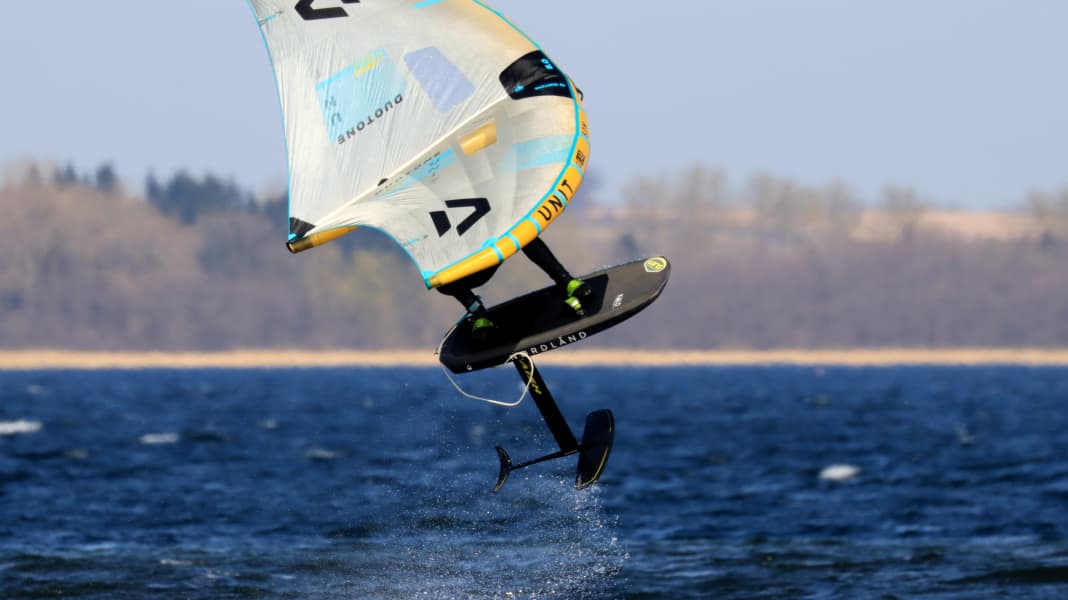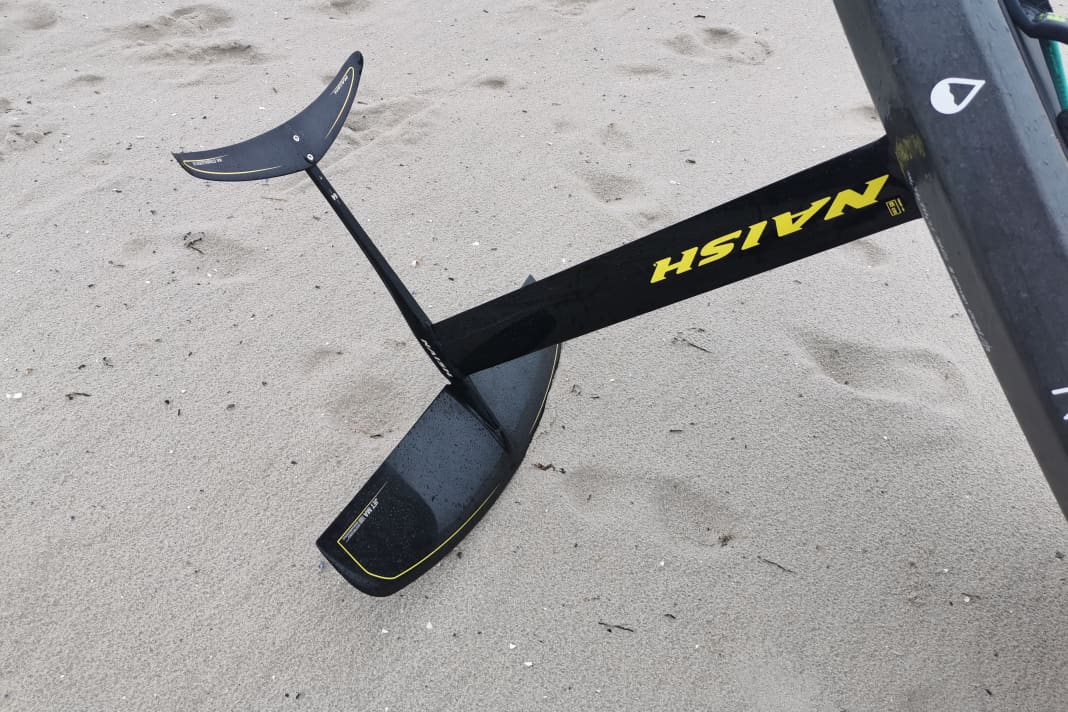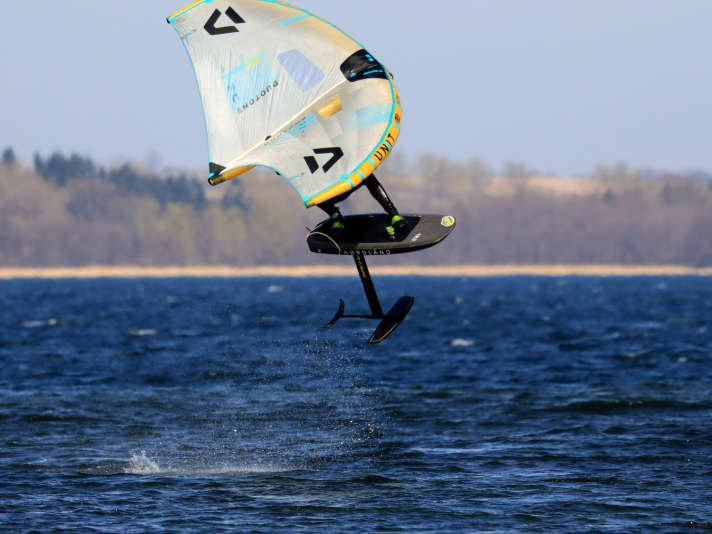
TheNaish MA Foil is designed to combine the compact wingspan of low-aspect foils with the fast profile of a sporty high-aspect wing. This positions the MA Foil between the two models in the Naish product rangeJet (Low-Aspect-Foil; HERE there's a test) and theJet HA (High-Aspect-Foil; TEST ).
On land:
TheJet MA Foil is available in five sizes - with 850/1000/1200/1600 and 2000cm2 front wings. What they have in common is that the front wing has a very compact wingspan for this size. Our test foil with a 1600 front wing, for example, has a wingspan of just over 81 centimetres, which is around seven centimetres less than the low-aspect foilJet 1650 and 19 centimetres less than the High-Aspect-Foil, for exampleJet HA 1800 With regard to the profile, theNaish HA Foil more in the centre, i.e. with a thinner profile than theJet 1650, but thicker than e.g. theJet HA 1800.






We tested the foil with aCarbon 35 Mast with a length of 85 centimetres, which - like all 2022 Naish masts - is equipped with a new head. This is designed to make the connection to the fuselage stiffer and more robust thanks to an enlarged contact surface. As in the past, Naish uses M6 Torx screws throughout, so a single tool is enough to assemble the entire foil. TheMA Foil comes with covers for the wings, bag and tools. Overall, the components impress with their very high accuracy of fit.

On the water:
On the water, theNaish MA Foil 1600 is indeed the golden mean sought by the manufacturer: It needs a little more basic speed to take off than, for example, theJet 1650, but still takes off early and similarly smoothly. As expected, the speed level is noticeably higher than that of the thicker-profiledJet 1650, the power supply offersMA Foil definitely has enough potential for jumps or even first freestyle tricks. It also stoically ignores gusts on the straight and shows little tendency to rise uncontrollably. Around the longitudinal axis, theHA Foil is significantly more nimble and agile than the models when changing directionJet andJet HAwhich is certainly a consequence of the reduced wingspan. Conversely, however, this also means that a little more sensitivity is required from the pilot on the straight and in manoeuvres, as incorrect loading is punished more quickly with an uncontrolled hook.

Naish MA Foil 1600 - the conclusion:
TheNaish MA Foil does indeed have quite a large target group and should appeal to all wingsurfers who are beyond the beginner stage and are looking for an agile, light-footed foil for manoeuvres through to their first jumps. However, when pumping, e.g. on long swells, the concept runs out of breath noticeably faster, stretched wings with a high aspect ratio like theJet HA 1800 have clear advantages here. Even those who want to practise freestyle tricks such as 360s will benefit from aJet HA could get a little more speed and therefore height. So who still needs the low-aspect model?Jet? Actually, only if you regularly surf at the absolute lowest wind limit, e.g. on windless inland lakes. Thanks to the thicker profile, aJet 1650 and stays in the air longer in wind holes and when pumping.
Good combination of lift, speed & agility
Pumping/sliding on the shaft
